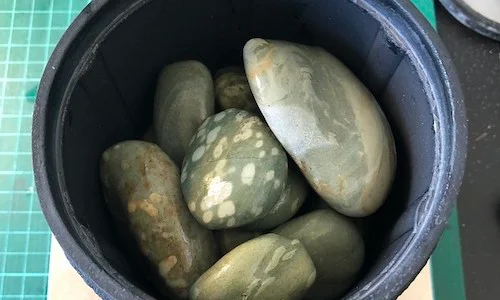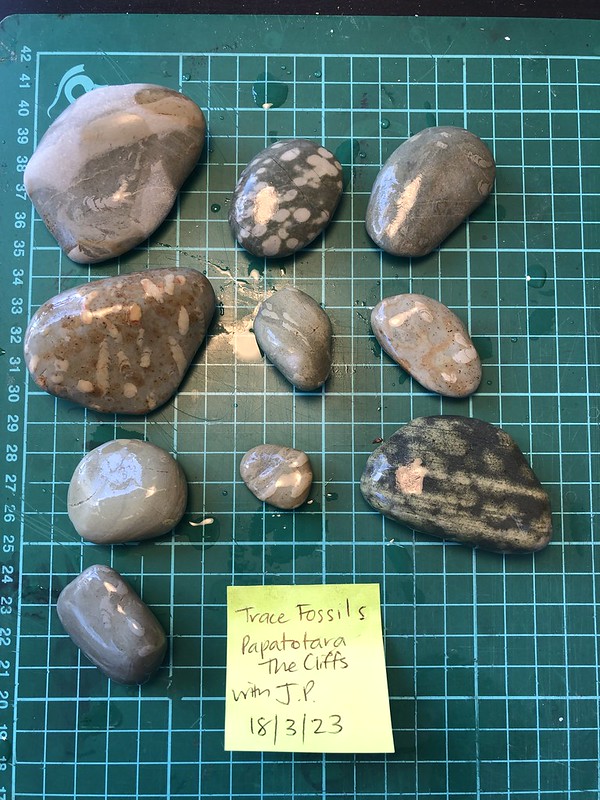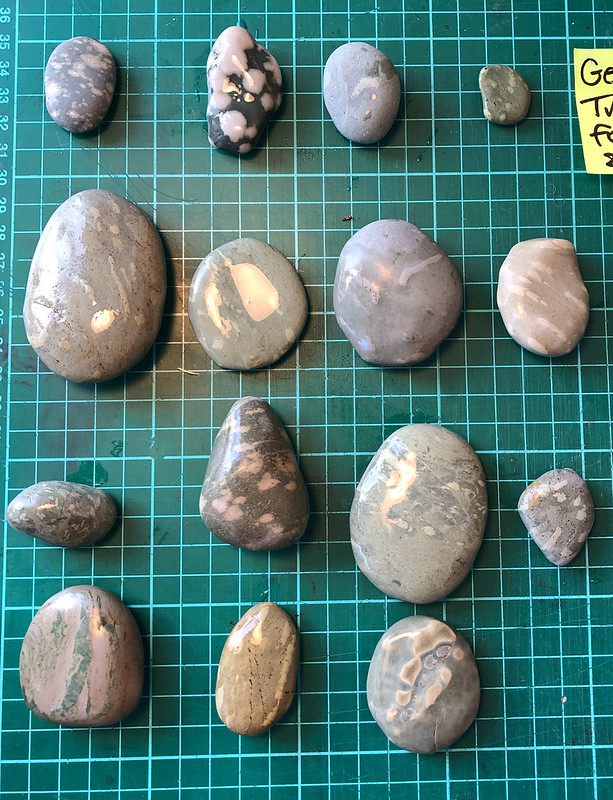Trace fossils are usually a mud-like stone that an “animal” as left a trace or trail of movement through. Trace fossils represent animal behaviour rather than the animal itself which means the stones don’t contain body parts, skeletons or shells.
This is the first time I’ve ever tumbled trace fossil stones. The stones are usually a lot smoother than other stones so they don’t require a tumble at 80/100grit or 220grit. Although sometimes the trace is slightly raised therefore you wouldn’t want to smooth that trail out! JP’s advice is to try them at 400grit or 600grit first and then decide if they need to go back to redo again with 400grit.
That makes total sense because you can always smooth out more in a repeat tumble but you don’t want to smooth away those traces by using too coarse a grit!
3lb Tumbler 2 – Batch 16
Number of stones: 25
10 from Papatotara Fossick #1 with JP and 15 from Gemstone Beach Fossick #2 with JP.
Weight in: 1045g
Grit: Started with 400grit – 4 Tbspns. Pellets added to cushion.
Days tumbling: 10 days
Weight out: I forgot to weigh them!
After 10 days of tumbling in the 3lb tumbler, and upon closer inspection, I removed a few of the stones (3) because I don’t think they are trace fossils.
I also wasn’t that happy with the finish of the stones at 400grit so I’m thinking that I will re-tumble them all with the 400grit again. For now the trace fossils are sitting in the holding box.
If you are interesting in reading more about trace fossils, especially where and when they were first identified, check out the TumblestoneBlog by JP (I’ve linked his Fossil worm cast category so that you can see all the posts he’s done on this topic!) Someone passed this way: Tracks, trails, impressions, and footprints written by Brian Ricketts is also an interesting read!
Batch 16 | 3lb Tumbler 2 | Papatotara/Gemstone | 31 March – 10 April




